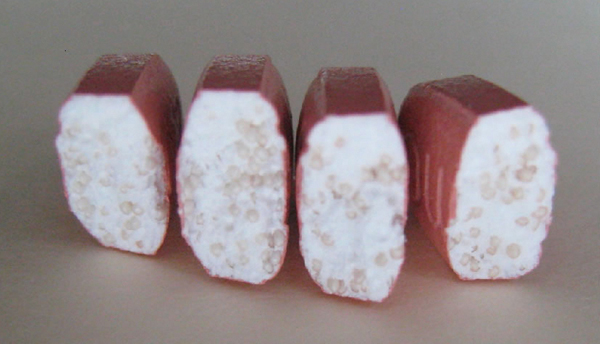Formulation and evaluation of new oxycodone extended release multiple unit pellet system

The goal of the present study is to prepare a stable, multiple-unit, extended-release dosage form containing oxycodone pellets coated with aqueous ethylcellulose (EC) dispersion, Surelease E-7-19050. The application of 18% w/w of EC leads to the similar drug release with the hydrophobic, non-swelling, matrix reference product containing 20 mg of oxycodone. Increasing the compression force to 9 kN and including more than 50% w/w of oxycodone pellets into the formulation resulted in faster drug release, indicating the damaging to the EC film coating. The physical appearance of the final formulation, assay of oxycodone, moisture content, and dissolution data over the stability period showed that the multiple-unit pellet system (MUPS) is efficient for the production of highly stable product. Download the full publication here: Formulation and evaluation of new oxycodone extended release multiple unit pellet system
Introduction
Coated pellets are frequently used for oral, controlled-release, drug delivery. The recent trends indicate that multiparticulate drug delivery systems are especially suitable for achieving controlled- or delayed-release oral formulations with low risk of dose dumping, flexibility of blending to attain different release patterns, as well as reproducible and short gastric residence time (Dey et al., 2008).
Controlled-release drug delivery systems provide a uniform concentration at absorption site, maintain plasma concentration within a therapeutic range, reduce the frequency of administration, and minimizes the side effects. It is also important to avoid dose dumping after the oral administration of ER dosage forms, especially for drugs that possess the characteristics of a higher solubility, higher dose, or a fatal side effect (Uros et al., 2014). Furthermore, an alcohol-induced dose dumping effect in oral ER dosage forms has gained increased attention in the recent years (Jedinger et al., 2014).
Compaction of multiparticulates, commonly called MUPS (abbreviation for multiple-unit pellet system), is one of the most recent and challenging technologies that combine the advantages of both tablets and pellet-filled capsules in one dosage form. The multiparticulates spread uniformly throughout the gastrointestinal tract, resulting in less variable bioavailability and a reduced risk of local irritation. Various drug release profiles can be obtained by simply mixing pellets with different release characteristics or incompatible drugs can be easily separated (Dashevsky et al., 2004).
Oxycodone hydrochloride is a semisynthetic opioid agonist that provides effective relief for moderate to severe pain in cancer and postoperative patients. The pharmacokinetic and steady-state pharmacodynamic studies with immediaterelease (IR) oxycodone have shown it to be well tolerated, with adverse effects similar to those of other opioids. The bioavailability of oral oxycodone in humans is 60% (range: 50– 87%). The terminal elimination half-life is independent of dose, with modest interindividual differences (Fukui et al., 2017). Ethylcellulose (EC) has been widely used as a barrier membrane or binder to prepare pharmaceutical, oral, modified-release dosage forms.
The aqueous dispersion of EC, for example, Surelease, has been used to manufacture modified-release multiparticulates for filling into capsules and single-unit tablets or soft-gel capsules through filmcoating applications. In addition, the use of aqueous EC dispersion as a release retardant binder for the manufacture of inert matrices has been reported. Surelease® enhanced the compaction characteristics of the drug, and the drug was released from those inert porous matrices by diffusion (Rajabi-Siahboomi & Farrell, 2008). Download the full publication here: Formulation and evaluation of new oxycodone extended release multiple unit pellet system

